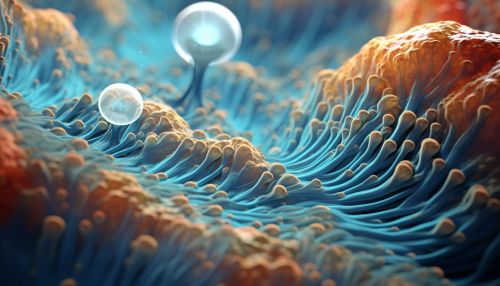Endospore
Introduction
Endospores, also known as bacterial spores, are a unique type of dormant cell produced by certain bacterial species. These structures are highly resistant to harsh environmental conditions, such as extreme temperatures, desiccation, and radiation, which would normally be lethal to most life forms. Endospores allow the organism to survive in a dormant state for extended periods, even centuries or longer, until conditions become favorable for the return to a vegetative state.


Formation
The formation of an endospore, known as sporulation, is a complex process that occurs in response to environmental stress signals. It involves the creation of a copy of the bacterial chromosome and the encasement of this copy in a tough, protective coat. The process of sporulation can be divided into several stages, including pre-sporulation, cortex formation, coat synthesis, maturation, and finally, release of the mature endospore.
Structure
Endospores are characterized by their unique and complex structure, which is primarily responsible for their extreme resistance properties. The core of an endospore contains the bacterial DNA, ribosomes, and large amounts of dipicolinic acid, a substance that contributes to heat resistance. Surrounding the core are several protective layers: the inner membrane, the germ cell wall, the cortex, the outer membrane, the coat, and in some species, the exosporium.
Resistance Properties
Endospores are renowned for their resistance to extreme environmental conditions. This resistance is largely due to the endospore's unique structure, particularly the presence of the protective coat and the high concentration of dipicolinic acid in the core. Endospores can survive exposure to high temperatures, radiation, chemical disinfectants, and even the vacuum of space. This resistance allows the endospore to remain dormant for extended periods until conditions become favorable for germination.
Germination
Germination is the process by which an endospore returns to a vegetative state. This process is triggered by specific environmental cues, such as the presence of certain nutrients. During germination, the endospore absorbs water, the protective layers break down, and metabolism resumes. The resulting vegetative cell can then begin to grow and divide.
Ecological Significance
Endospores play a significant role in various ecological contexts. Due to their resistance properties, they contribute to the survival and dispersal of bacterial species in the environment. Endospores can be found in a variety of habitats, including soil, water, and air. They also play a role in disease transmission, as some pathogenic bacteria, such as B. anthracis and C. perfringens, are able to form endospores.
Medical and Industrial Significance
In the medical field, endospores are of particular concern due to their resistance to sterilization procedures. Certain pathogenic bacteria that form endospores, such as C. difficile, are a major cause of hospital-acquired infections. In the industrial context, endospores can cause problems in food preservation and spoilage, as they can survive cooking and canning processes. On the other hand, endospores are also utilized in the production of probiotics and in other biotechnological applications.
